The First Mainstream Electric Car that Can Go the Distance
Ever get the feeling Chevrolet is daring you not to buy an all-electric Bolt? With the average purchase price of a new car in 2017 being about $31,000, you can get into a Bolt with all tax credits and incentives (Federal and State) included, in the high-$20,000 range for the base model. Oh, and of course you will not spend a penny on gasoline or oil, nor will you have the regular maintenance associated with a gasoline-powered car. Sounds pretty good? So what’s not to like? Could it be an unfounded perception that an EV keeps you from going where you want to go? Or maybe it is not accepting the fact that a pure electric car will satisfy 90-percent of your driving needs and lifestyle. If you are like most people and drive solo or with one passenger, under 50 miles daily, the reasons to own a gasoline-powered car are decreasing daily. This is Range Anxiety debunked.

The 2017 Chevrolet Bolt EV is fun-to-drive and quiet, but why shouldn’t it be? With no internal combustion engine (ICE) or transmission gears, the all-electric Bolt simply whooshes along with smooth efficiency at any speed.
238-Mile Range Technology
It is hard to believe that General Motors, known for big trucks and SUVs, would be the first full-line auto manufacturer to come out with an all-electric car that can travel 238 miles on a single charge. The EPA arrived at this number as the Bolt gets 110 MPGe on the highway and 128 MPGe in the city. MPGe is an EPA measurement of how far a car can travel, electrically, on the same amount of energy as is contained in one gallon of gasoline.
Charging and Stopping
The 60-kWh lithium-ion battery is charged by the 7.2-kW onboard charger. A plug-in port offers three charging speeds. The batteries, going from discharged to a full charge, the approximate times would be:
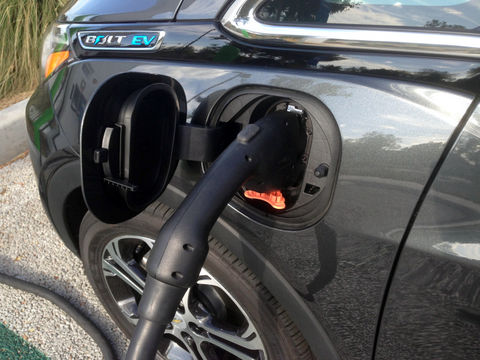
- 120V (Level 1) 20 hours
- 240V (Level 2) 10 hours
- 480V DC Fast Charging 90 miles of range in 30 minutes
Additional charging is through the regenerative braking system that converts braking or coasting into electricity that is stored in the battery. Driving around town, stuck in stop-and-go rush hour freeway traffic or coasting down hills will recharge the battery. The battery charge and mileage range are metered instantly by dash gauges.
The Driving Experience: On the Road
Powered by a 150-kW electric motor driving the front wheels, the 200 horsepower and 266 pounds-feet of torque zips the Bolt around with great fun. Chevrolet claims a 6.8-second 0-60 time and 91 mph top speed. We matched the former but didn’t even attempt to get anywhere near the latter. At 3,560 pounds, the 2017 Bolt is quiet and smooth. The batteries located under the seats made for a sure-footed driving experience that truly shines in city maneuvers and around tight corners. Considering it comes with all-season, Michelin Energy Saver 17-inch tires that are designed for low rolling-resistance, Chevrolet designed the Bolt with a very good road feel. The electric power steering was not too light, and body roll, even when pushed above recommended corner speed limits, was predictable and minor. Highway 65+ mph cruising was solid and confident.

There is a choice of driving modes that affects the regenerative braking. Selecting the Drive mode, the brake pedal is used as normal for slowing and stopping. But using the Low mode, you can control braking with your fingertips, which is a very cool and useful technology. Found on the left side behind the steering wheel is a paddle “shifter” that, when blipped, initiates regenerative braking. What is cool about this is, once you get the hang of it, driving around without using the brake pedal—even coming to a complete stop. This technique, called “one-pedal driving,†lends itself to getting the most electricity from regenerated braking, as fingertips are far more sensitive than a foot tromping on the brake pedal. It is an especially fun technique to master when driving on curvy roads as it gives the ability to slow with your fingers and accelerate with your foot.
A good handling car is nothing without good brakes. The Bolt comes standard with an anti-lock braking system, power-assisted front vented and rear solid discs. Handling and driving confidence was aided by dynamic rear brake proportioning and electronic stability control.
Driving Experience: Exterior
Chevrolet likes to say the Bolt is a small crossover. The EPA (which classifies all vehicles into categories) says the Bolt is a small wagon. Does the difference matter? To Chevrolet it does, as crossovers are hot sellers and wagons not so much. But if Chevrolet really wanted the Bolt to be a true crossover size, why didn’t they design it as such and eliminate any confusion?
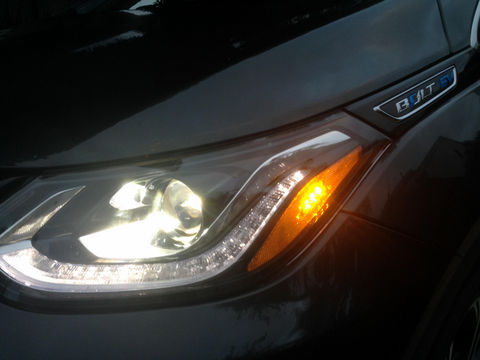
The Bolt has a very common hatchback design, a sloping roof-to-windshield-to-bumper profile, that has slim LED projector headlamps wrapping onto the fender, with LED daytime running lights in the lower fascia. The roof, with rack and side rails, never finds a flat surface as it gently arcs to an integrated spoiler over the rear hatch window. Large LED tail lamps wrap onto the fenders. From the side view, the window design is eye-catching and unique, with blacked-out B-pillars and just the lightest touch of a chrome accent strip. The Bolt is clean and looks smaller than it is, partly because of the visual perception from the wide-set wheel placement and the roof height.
Driving Experience: Interior
The Bolt interior gives a feeling of spaciousness, with four full-size adults fitting comfortably, or two adults upfront and three children in the rear. The big issue with the Bolt interior is the materials. There is an abundance of hard plastics and surfaces that should be soft, like the armrests and seats, which were, well, to be kind–hard. Recaro racing seats are firm: Bolt seats are hard. We even noticed the “leather appointed seats†were covered in a leather we had never seen before. For a $43,000 car (the top-of-the-line Bolt Premier model tested by Clean Fleet Report), the interior fit and finish was a disappointment. Also, the seven-shape shifting pattern of the console-mounted gear shifter made getting into reverse a stop-and-think-about-it process.
Now, onto what is good about the interior. The front seating position is higher than would be expected for what looks like a compact car. Sight lines are excellent. This is how Chevrolet came to the conclusion that the Bolt is a crossover, as all vehicles in this class raise the front seats to a road-commanding view height.
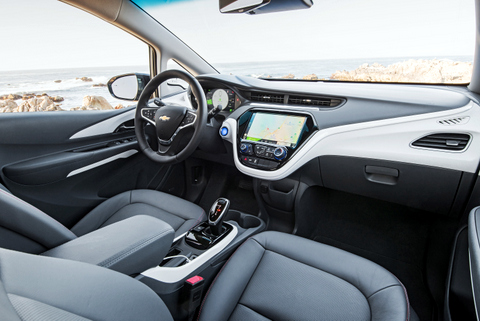
All controls are within easy reach of the driver, including the 8.0-inch instrument cluster, viewed through the steering wheel, with a white background on the gauges making them easy to read. The 10.2-inch color touchscreen housed Chevrolet’s MyLink infotainment system (information and entertainment) that featured navigation and a Bose, six speaker AM/FM/HD radio and CD player, with USB slots. Also part of the infotainment system is SiriusXM (90-day trial included), Bluetooth for telephone and streaming music and Apple CarPlay and Android Auto from Google. Other nice features are wireless device charging, assuming your device has this ability, rear charge-only USB ports, and a front storage area that can swallow a tablet or laptop.
The heated front seats are manually adjustable for height, sliding and lumbar. When combined with the height adjustable and telescoping steering column, a comfortable driver position could be found. Especially noticeable was how far back the driver’s seat slides: no circus contorting for the six-foot plus crowd. The rear seats are heated in the outboard positions. Exterior road and wind noise were very low.
Storage space with the rear seat up, accessed through the rear hatch, is ample, but not as much as others in this class of EVs such as the Hyundai Ioniq, Volkswagen e-Golf and Toyota Prius Prime. If the driver and front-seat passenger are on a long weekender, the rear seat back splits 60/40 and lays flat, providing 56.6 cu. ft. of cargo capacity – large enough for a full-size bicycle. Additional storage comes in the guise of a false floor, that when removed, allows for the hauling taller objects.
Other features are a leather-wrapped multi-function steering wheel with radio and telephone controls, power windows with one-touch operation down/driver one-touch up, remote start, power adjustable and manual folding exterior mirrors with turn signals, and a multi-function car analytics and trip computer display.
Safety and Convenience
The Bolt Premier is well equipped with convenience features including power door locks, adaptive cruise control, automatic HVAC, heated outboard rear seats, wireless charging, 4G LTE Wi-Fi Hotspot with a three-month trial subscription, tire pressure monitoring system, keyless push button on/off and OnStar. A unique safety feature is the Rearview camera mirror that replaces the regular image with an 80-degree image applied over the inside rearview mirror.
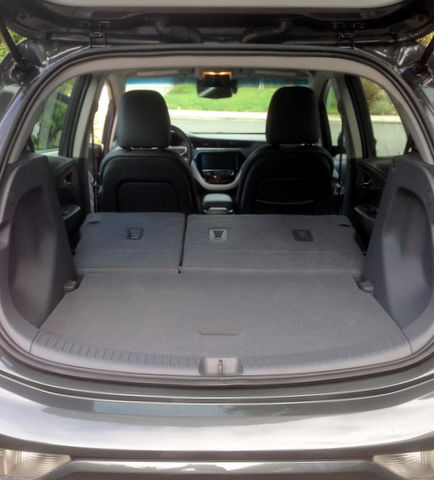
Hotspot with a three-month trial subscription, tire pressure monitoring system, keyless push button on/off and OnStar. A unique safety feature is the Rearview camera mirror that replaces the regular image with an 80-degree image applied over the inside rearview mirror.
A note regarding OnStar: a simple push of a button connects you with a friendly General Motors representative to handle emergencies, directions and general assistance to make your driving experience safer and more enjoyable. This is one area where GM is the industry leader, and after the one-year service plan expires it is well worth renewing.
The Bolt EV has 10 airbags, a tire pressure monitoring system, forward collision alert, front automatic braking, lane assist, blind spot monitoring and park assist and rear parking distance control sensors.
Pricing, Warranties and Safety
There are two 2017 Chevrolet Bolt models.
- LT $37,495
- Premier $41,780
Clean Fleet Report tested a Bolt Premier with option packages of DC Fast Charging, Driver Confidence II and Infotainment. That added $1,730. The MSRP of our test Bolt Premier was $42,635. All prices do not include the $875 destination charge.
The 2017 Chevrolet Bolt has not been rated by the Insurance Institute of Highway Safety (IIHS) or the National Highway Traffic Safety Administration (NHTSA).
The 2017 Bolt comes with these warranties:
- Complete Care – Two years/24,000 miles
- Bumper-to-Bumper – Three years/36,000 miles
- Powertrain – Five years/60,000 miles
- Electric Propulsion Components – Eight years/100,000 miles
Observations: 2017 Chevrolet Bolt Premier
New in 2017 and with few changes for the 2018 model year, Chevrolet says the Bolt EV is “every reason to drive electric.†Clean Fleet Report agrees.
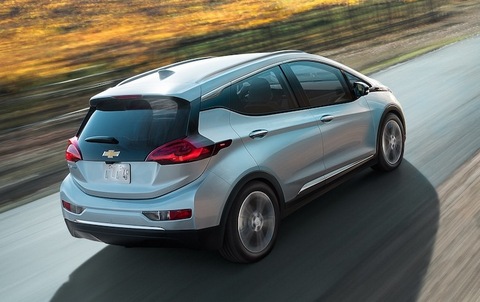
The Bolt has made it possible to go 238 miles on a single charge in a car costing about $30,000 after incentives are applied. Before December 2016, when the Bolt debuted, you would need to spend at least twice that amount for a vehicle with comparable range.
The Bolt is a comfortable and well-designed car, with good handling in a spirited all-electric driving experience. It is also practical in many ways, starting with the ability to handle a full week’s worth of 40-mile per day commuting without recharging. Notice we didn’t say using any gasoline? Well, that also drives home another practical point that zero dollars will ever be spent on gasoline or the usual maintenance that comes with an internal combustion engine.
Other mass market, five seat all-electric compacts that sell against the Chevrolet Bolt are the Volkswagen e-Golf and Nissan Leaf, with only the Leaf joining the Bolt as a car that can be purchased in all 50 states. The Fiat 500e says it can seat five adults, but we have tried and it is more like four. The Tesla Model 3 can also seat five, but it will cost more than $50,000 when optioned equally to the Bolt Premier—and is still trying to deliver vehicles promised to those on the waiting list who have put down deposits.
With our only negatives on the Bolt being the interior, we are confident you can easily overlook these quirks to enjoy miles and miles of silent running, non-polluting electric driving.
All major auto manufacturers are announcing plans for electrifying their models, with an impressive number being released before the year 2025. In eight short years it will be nearly impossible to find a mainstream manufacturer that does not have a hybrid, plug-in hybrid, EV or hydrogen fuel cell. So, getting a Bolt EV now will set you up for that next generation of electrified cars that will cost around $35,000, but go 400+ miles on a charge. It is an exciting time to be a car buyer.
Whatever you end up buying, enjoy your new car and as always, Happy Driving!
Related Stories You Might Enjoy:
Personal: My First Year with the Chevrolet Bolt
New: Chevrolet Bolt: Your Price May Vary
Road Test: 2017 Volkswagen e-Golf Premium
News: First Tesla Model 3 Deliveries
Flash Drive: 2018 Nissan Leaf
Road Test: 2017 Fiat 500e
Buyer’s Guide: Tesla Model 3, Chevrolet Bolt or other EV?
Disclosure:
Clean Fleet Report is loaned free test vehicles from automakers to evaluate, typically for a week at a time. Our road tests are based on this one-week drive of a new vehicle. Because of this we don’t address issues such as long-term reliability or total cost of ownership. In addition, we are often invited to manufacturer events highlighting new vehicles or technology. As part of these events we may be offered free transportation, lodging or meals. We do our best to present our unvarnished evaluations of vehicles and news irrespective of these inducements.
Our focus is on vehicles that offer the best fuel economy in their class, which leads us to emphasize electric cars, plug-in hybrids, hybrids and diesels. We also feature those efficient gas-powered vehicles that are among the top mpg vehicles in their class. In addition, we aim to offer reviews and news on advanced technology and the alternative fuel vehicle market. We welcome any feedback from vehicle owners and are dedicated to providing a forum for alternative viewpoints. Please let us know your views at publisher@cleanfleetreport.com.

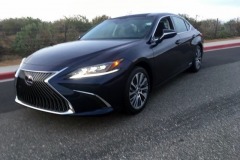
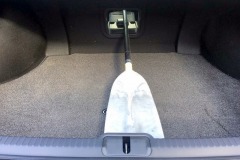
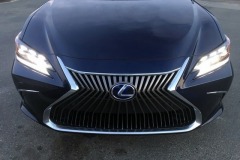


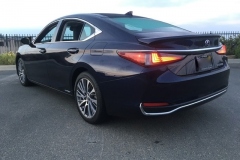

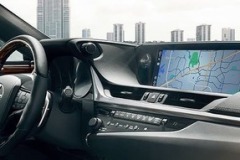

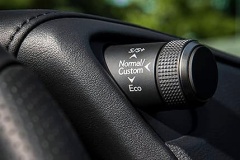
@Alan Clarke,
There are a variety of CVT configurations. Other manufacturers use a belt-driven type. There have been various attempts to update and improve on the CVT since its introduction decades ago. –ed.